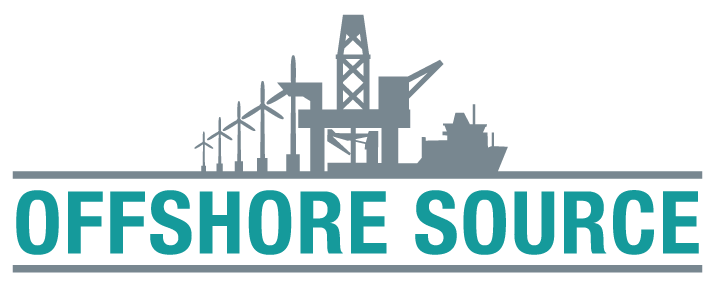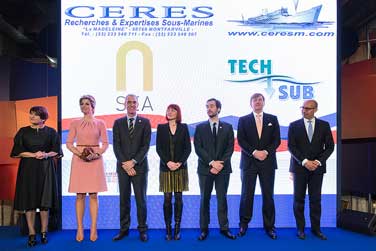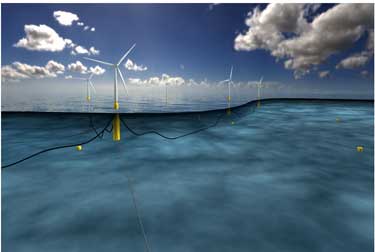The Bureau of Ocean Energy Management (BOEM) has announced its first step toward potential leasing for commercial wind energy development in federal waters offshore California. BOEM has completed an initial review of an unsolicited lease request from Trident Winds, LLC (Trident Winds) for a floating wind energy project offshore Morro Bay, California, deemed the request complete, and will soon issue a Federal Register Notice to determine if there is competitive interest in the area.
“Today’s announcement marks an important step in facilitating the responsible development of clean offshore energy to power homes and businesses in the Golden State,” said BOEM Director Abigail Ross Hopper. “BOEM will work closely with the state of California, industry and a broad range of stakeholders to ensure that our leasing process is conducted in a thoughtful, engaged, and transparent manner.”
 Image credit: BOEM
Image credit: BOEM
As part of its review, BOEM confirmed that Trident Winds is legally, technically, and financially qualified to hold an offshore wind energy lease in federal waters. BOEM’s receipt of an unsolicited lease request is the first step in a leasing process that will include environmental analysis and extensive stakeholder engagement.
The Trident Winds request, received on January 14, 2016, is the first formal interest in obtaining a lease for wind development in federal waters off California. The proposed a project would generate up to 800 megawatts (MW) of power using about 100 floating foundations, each supporting a turbine that could produce up to 8 MW. A single seafloor transmission cable would bring the electricity to shore. The proposal may be expanded to generate 1,000 MW at a later date, if additional transmission capacity and market off-take can be obtained. The project would be located about 33 nautical miles northwest of Morro Bay in water depths of 2,600‐3,300 feet. The proposed lease area is 67,963 acres.
"As California moves forward to meet 50 percent of the state's energy needs with clean, renewable energy by 2030, wind power will play an important role," said Commissioner David Hochschild of the California Energy Commission. "This offshore wind project proposal, the first of its kind, marks another important milestone."
The next step in BOEM’s process is to publish a Federal Register Notice to determine if there is competitive interest in the area requested. The Notice also requests the public and interested stakeholders to comment and provide information on site conditions, commercial, military or other uses of the area and potential impacts of the proposed Trident Winds project. BOEM expects to issue the Notice this summer.
BOEM will use the information and expressions of interest received during the comment period to determine whether there is competitive interest in the area. If BOEM determines there is competitive interest, it will initiate the competitive leasing process. If no expressions of interest are received, BOEM will proceed with the noncompetitive leasing process. BOEM will also use responses to the Notice to inform decision-making about the proposed project and to identify potential issues for National Environmental Policy Act analysis.
To date, BOEM has awarded eleven commercial wind energy leases in federal waters off the Atlantic coast, including nine leases issued as a result of competitive lease sales (two leases in an area offshore Rhode Island-Massachusetts, two offshore Massachusetts, two offshore New Jersey, two offshore Maryland, and one offshore Virginia). Competitive lease sales generated $16.4 million in winning bids for more than a million acres in federal waters. Floating turbine platforms anchored to the seafloor, as proposed by Trident Winds, offer an alternate technology for generating wind power in the deeper waters off the Pacific coast.
A copy of Trident Winds unsolicited lease request and additional information on the BOEM wind energy leasing process, can be viewed at www.boem.gov/california/.


 Image credit: BOEM
Image credit: BOEM Subsea IMR provider,
Subsea IMR provider,  Representatives of N-Sea, CERES Recherches & Expertise Sous-Marine and TechSub Industrie Environement with the King and Queen of the Netherlands at the Dutch Trade Mission.
Representatives of N-Sea, CERES Recherches & Expertise Sous-Marine and TechSub Industrie Environement with the King and Queen of the Netherlands at the Dutch Trade Mission. Drawing on over 30 years experience of supplying high quality cranes for offshore applications,
Drawing on over 30 years experience of supplying high quality cranes for offshore applications,  MacGregor
MacGregor